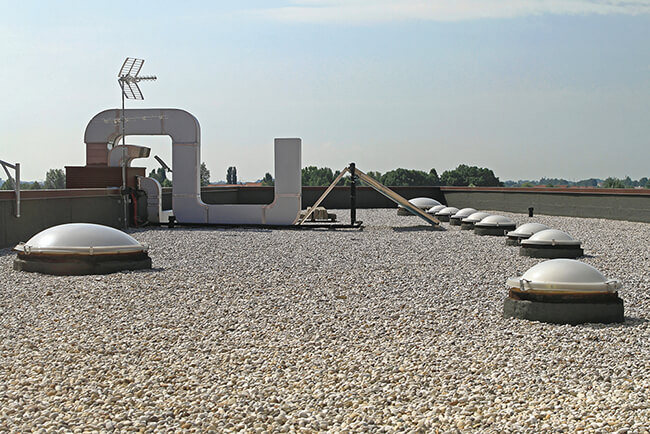It’s important to replace a commercial roof in a timely fashion to keep the interior of the building and any property inside belonging to your business protected. If a roof is damaged or worn out, it can’t protect your business from the elements. Let’s see what are the 7 most important things that you should consider when replacing a roof.
1. The Climate

Different parts of the country have different weather conditions, and the roofing material used on your commercial roof needs to reflect that. For example, Florida is both hot and humid. There are also seasonal hurricanes that can cause damage to a roof. Any roofing material chosen for a commercial building located in Florida needs to be more able to withstand hotter temperatures, rain, and high-speed winds. Commercial buildings located in the northern states may not need to consider hurricanes but will have to take snow and cold temperatures into account.
2. Building Codes
Building codes are not federally enforced but are enforced at the state and local levels. This means that when you replace a roof on a commercial building, you’ll need to keep in mind both state and local regulations and ensure that the new roof is installed according to code. Codes can change, as can roofing designs and materials, so even if the old roof was built according to the code, it’s important to check to ensure that the new roof still meets state and local building standards.
3. Your Budget
Before you start the process of replacing your roof, you should determine your budget. However, you should also keep in mind that how much you spend on a roof replacement now may impact how much you’ll have to spend later on and how quickly you’ll need to replace the roof again. Spending more money on a longer-lasting roof now may help you to save money later on because your roof will last longer. A sturdier roof may also save you money on repairs and maintenance costs.
4. The roofing material Options
The roofing materials that can be used for a commercial building may differ from those for a residential home. Often, the roof of a commercial building is flat rather than sloped. The most commonly used roofing materials for a commercial roof include:
- Metal
- PVC roof membrane
- TVP roof membrane
- EPDM roof membrane
- Shingles
- BUR membrane
- Spray-on silicon
- Green roofing
You should consider how long each type of roofing material will last, how durable each is in the face of weather conditions in your area, and how much each type costs to install, repair, and maintain. Learn more about the best roof shingles here.
5. Insurance
If you have to replace your roof because it was damaged, then your insurance company may cover some, if not all, of the replacement costs, depending on your policy. If your business is located in Florida and the roof was damaged during a hurricane, for example, your insurance policy may cover repairs or a replacement. Before budgeting for a roof replacement, you should check to see if your insurance company may pay for at least some of the costs.
6. Installation
It’s also important to keep in mind how the new roof will be installed. Some roofing contractors remove the old roof before installing the new one, while others don’t. Installation, therefore, may have a different cost depending on who installs the roof. It’s important to recognize, however, that the least expensive installation may not always be the best installation when you shop around for roofing installation quotes.
7. Energy efficiency

When you’re choosing roofing materials, you should consider how energy efficient the roof will be. Energy efficiency is good for the environment but can also help lower your energy costs. Energy-efficient roofing can redirect heat away from the building, ensuring that the HVAC unit doesn’t have to work as hard to keep the building cool, reducing the amount you have to pay in energy bills.
Final Thoughts
In conclusion, there are several important things to consider when replacing a roof. Factors such as climate, building codes, budget, roofing materials, insurance, installation, and energy efficiency should all be carefully evaluated. By taking these considerations into account, homeowners can make informed decisions about their roof replacement project. Considering these key factors ensures that the new roof will be able to withstand the local climate, comply with building codes, fit within the budget, utilize suitable materials, be adequately insured, undergo proper installation, and provide energy efficiency benefits. This comprehensive approach guarantees a successful roof replacement that meets both functional and financial requirements.

